Americans with Disabilities Act (ADA) compliance plays a key role in the design and integration of modern AV systems. Inclusive spaces have become more essential as technology has embedded itself in how we communicate, teach, and collaborate. At Ford AV, we help navigate the complexities of ADA guidelines and deliver compliant, comprehensive AV solutions.
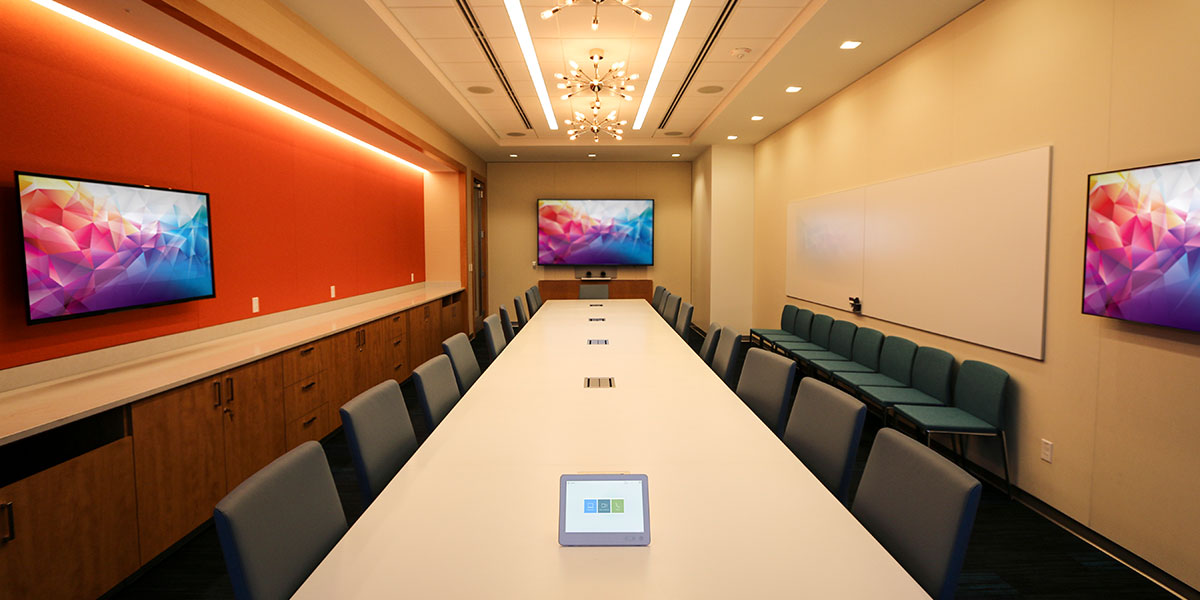
Understanding Core ADA Requirements for AV Systems
When designing AV systems, it is critical to understand both the technical and human-centered aspects of ADA compliance.
Operable parts should be mounted no higher than 48 inches above the finished floor for unobstructed forward or side reaches, and no higher than 44 inches when there’s an obstruction deeper than 20 inches. Controls must also be operable with one hand, require no tight grasping or twisting, and demand no more than 5 pounds of force. These details allow users in wheelchairs and individuals of varying statures to access equipment.
Display screens and projector centerlines should be mounted so they are within optimal viewing angles for attendees seated in wheelchair positions or at the back of the room. Signage for AV controls and emergency communication systems should include high-contrast characters, tactile elements, and accompanying Braille where appropriate. Protruding objects between 27 and 80 inches above the floor cannot extend beyond 4 inches from walls to avoid posing a hazard for those with visual impairments.
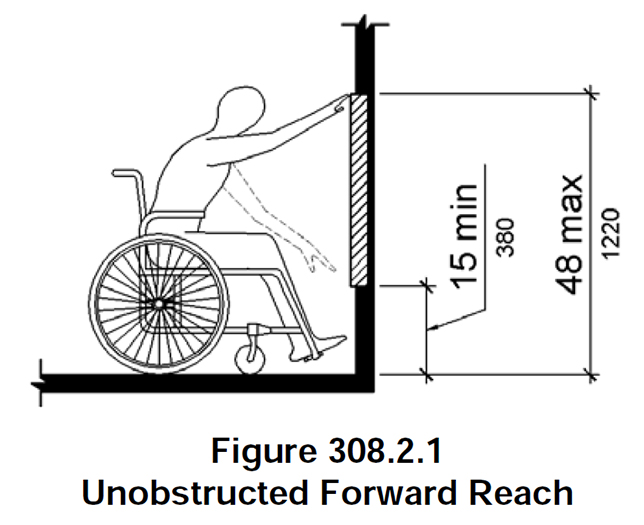
Key Considerations When Designing ADA-Compliant AV Systems
Control Panel and User Interface Design
Interfaces should feature large, easily distinguishable buttons, clear labeling, and provide tactile or audible feedback. Adhere to operable height requirements and ensure interfaces can be navigated with minimal dexterity. Adjustable height mounts allow flexibility for different user profiles and can be motorized or manually adjusted.
Audio and Hearing Accessibility
Integrated captioning solutions, real-time transcription services, and video display caption support ensure participants with hearing impairments receive the same audio cues and content.
Visual and Cognitive Accessibility
Projector and display brightness should be calibrated to reduce glare. Font choices on menus and prompts must follow sans-serif, high-contrast guidelines. Supplementary signage, such as visual alarms with strobe lights, alerts those with hearing impairments during an emergency.
Physical Room Layout and Movement Paths
Leave at least 36 inches of clear width for corridors and approach ranges to interactive elements. Where floor-to-ceiling mounts or column-mounted speakers are used, verify that no protruding objects extend beyond 4 inches from the walls.
Understanding Assistive Listening: How It Works and Why It Matters for ADA Compliance
Assistive listening devices (ALDs) allow individuals with hearing impairments to participate in everyday communications. This can be achieved through a variety of technologies. Each method has its advantages in terms of cost, scalability, and ease of integration, but all share the same goal of delivering clear, intelligible sound directly to the listener.
For fixed-seating assembly areas (theaters, houses of worship, lecture halls, etc.), regulations require assistive listening systems to be provided when audio amplification is used. At least 4% of fixed seats must have access to an ALD, and 25% of the receivers (but never fewer than two) must be hearing-aid compatible.
Hearing Loops (Induction Loops)
One of the most prevalent ALD technologies, the hearing loop (also called an induction loop), uses a wire circuit installed around the perimeter of a room or beneath the floor. Because the loop transmits sound magnetically rather than acoustically, background noise is dramatically reduced, and the listener receives a direct audio feed.
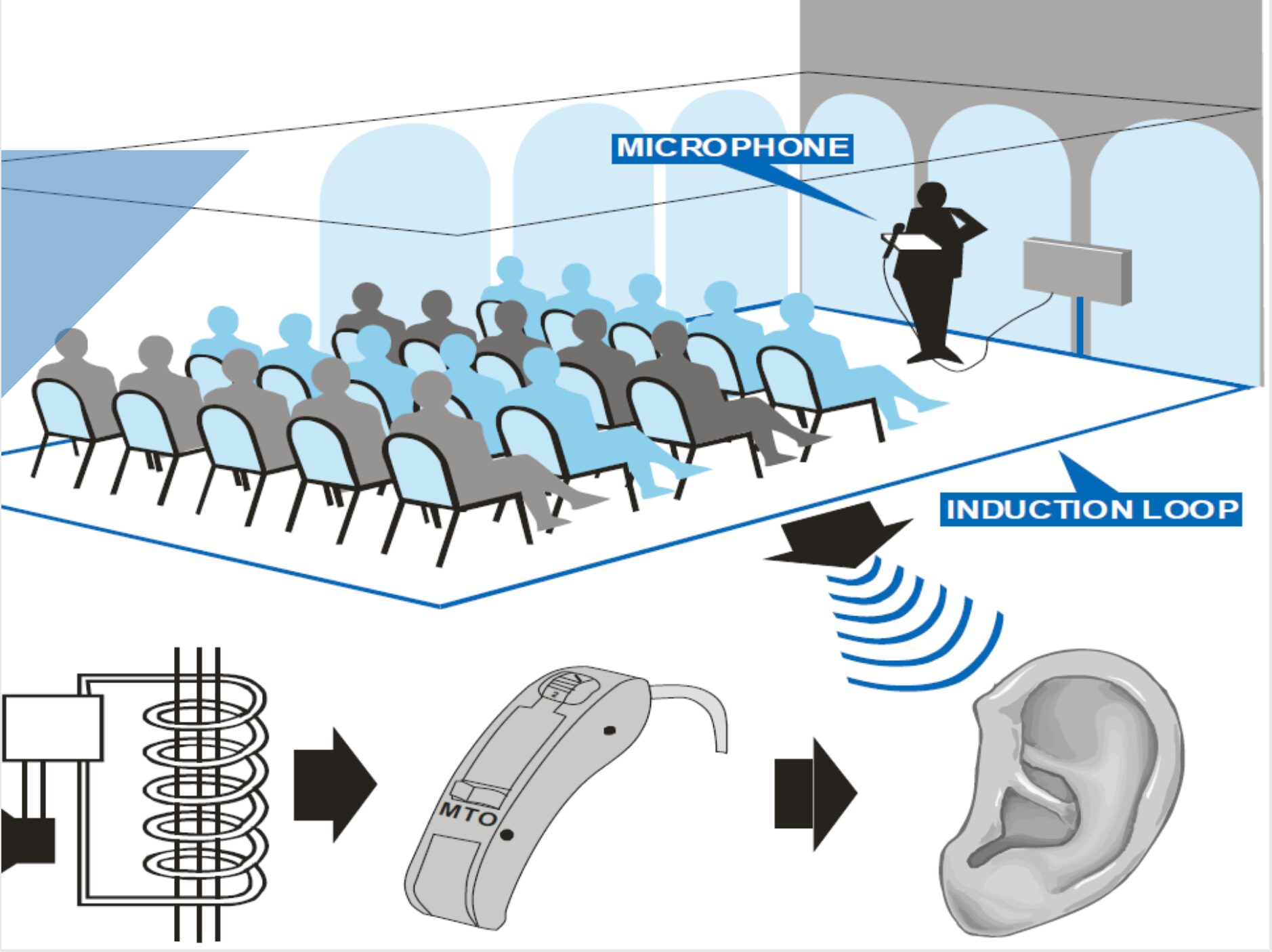
Infrared and FM Systems
Infrared (IR) assistive listening systems work by converting audio signals into invisible infrared light, which is sent to small, portable receivers worn by the listener. IR systems are highly secure (since infrared light does not pass through walls) and are ideal for places where signal bleeding could be a concern.
FM-based assistive listening systems transmit audio via frequency-modulated radio waves. FM systems tend to have a longer range than IR and are suitable for larger or outdoor venues where unobstructed coverage is needed. Receivers can be as simple as pocket-sized FM radios with earphones, making FM a cost-effective ALD choice.
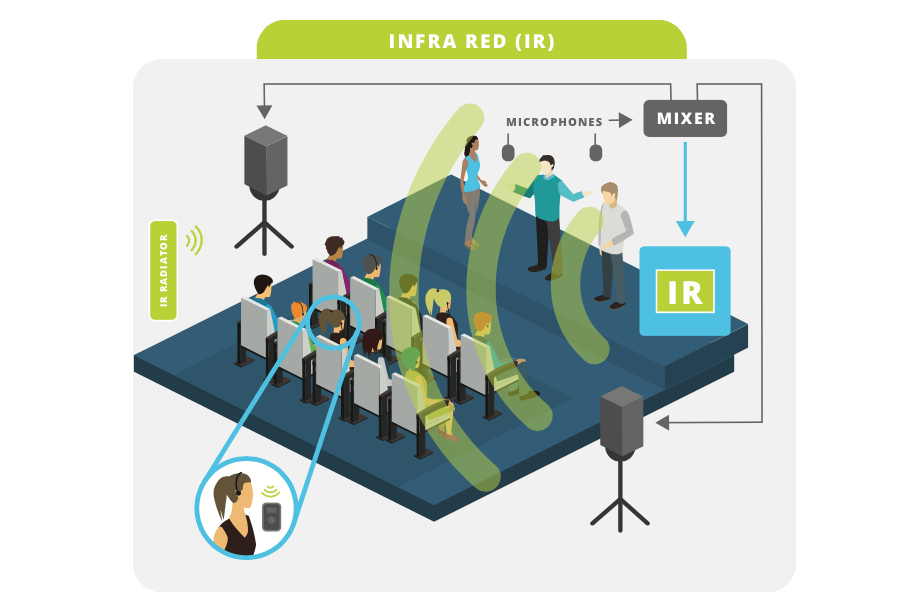
Digital and Wi-Fi–Based ALDs
Digital assistive listening solutions use spread-spectrum or 2.4 GHz technology to send audio packets wirelessly to dedicated receivers. These systems often offer full-duplex (two-way) capability. Digital systems can support multiple channels, enabling venues to provide alternate languages, audio descriptions, or private feeds for presenters.
Wi-Fi–based ALDs use existing network infrastructure to stream audio directly to smartphones or tablets, often through an app. Listeners open the venue’s ALD app, connect to the network, and receive a real-time audio feed. This method reduces hardware costs, simplifies maintenance, and is beneficial for spaces where fixed installations may not be practical.
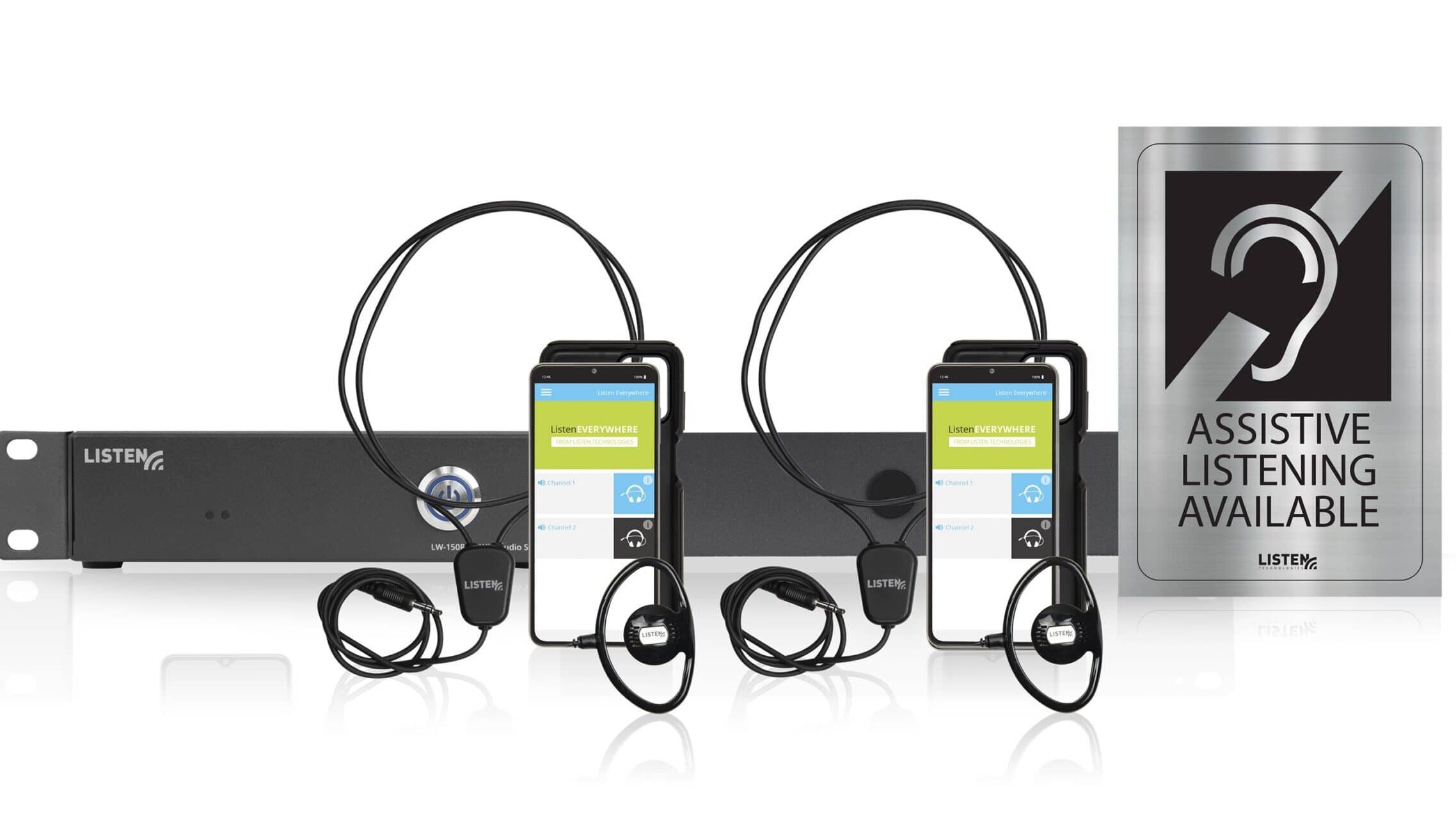
How to Evaluate Your Current AV Infrastructure
If you’re unsure whether your existing AV systems meet ADA requirements, here are a few places to start:
Measure Reach Ranges: Verify that all operable AV controls fall within the required 15-to-48-inch height range. Check for obstructions that could reduce this range and adjust installations accordingly.
Assess Assistive Listening Coverage: Count fixed seats in assembly areas with audio amplification systems and ensure enough ADA-compliant receivers are provided.
Review Visual Accessibility: Inspect screen brightness, seating sightlines, and signage contrast ratios. Evaluate the readability of on-screen text and verify digital signage includes closed captions where necessary.
Check Physical Pathways: Ensure your space includes 36-inch-wide accessible routes. Identify trip hazards and maintain clear floor space.
Examine Software Accessibility: Test control software with screen readers and keyboard-only navigation to confirm compatibility with users who rely on assistive technologies.
Partner with America’s Leading AV Technology Company
Our team has extensive experience in designing and deploying AV solutions across a wide range of environments. By prioritizing universal design principles, we create spaces where every participant has equal access to information and engagement.

- 50+ Years of Experience – Designing and integrating innovative audiovisual systems for organizations across multiple industries.
- Nationwide AV Services – Local teams supported by a national network for dependable AV installation, maintenance, and ongoing support.
- Comprehensive Expertise – From collaboration rooms and video conferencing systems to digital signage, enterprise control systems, and managed AV services.
- Scalable, Future-Ready Solutions – Engineered for reliability, flexibility, and seamless user experiences.
- Proven Performance – Trusted by Fortune 500 companies, universities, government agencies, houses of worship, and more.
Ready to connect with Ford AV professionals? Fill out the form below to transform your space with expertly designed and integrated AV technology.






